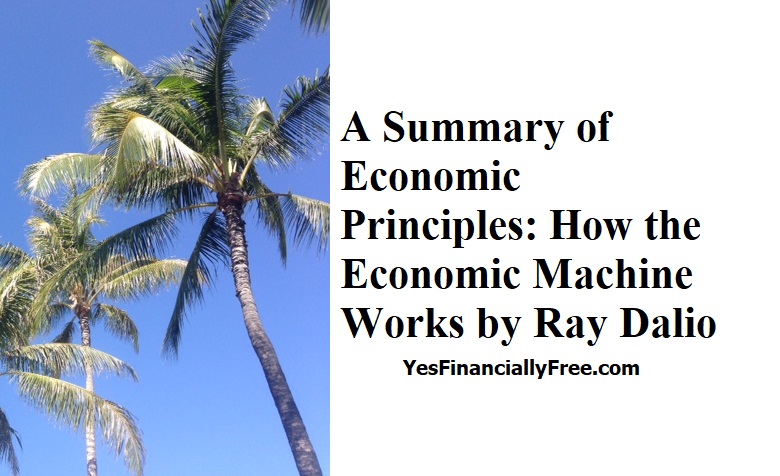
A Summary of Economic Principles: How the Economic Machine Works by Ray Dalio
Get ready for a summary of Economic Principles: How the Economic Machine Works by Ray Dalio.
There has been a lot of chatter and buzz over the recent market decline of 10% in a week.
A lot of people are worried that their stocks are going to lose value.
Many are worried that a virus is going to cause economic decline.
Want to know what causes these economic cycles?
I learned what I know from a 30 minute video made by the Financial Genius Ray Dalio – Economic Principles: How the Economic Machine Works.
Summary of Ray Dalio’s Economic Principles: How the Money Machine Works
The Economy is made up of markets, which are made up of transactions.
A transaction is when someone buys and someone sells.
You can buy a beer at a bar with cash and that would be a cash transaction.
You can also buy a beer with the promise to pay in the future, and that would be credit.
Every time you buy with credit, you create an asset (the loan or credit) and a liability (the debt).
When the borrower pays back the credit/debt, they have settled the transaction.
The more transactions that occur, the more the economy grows, because the more people spend the more money the seller makes and the more they spend and so on.
With a cash economy, the only way for you to get more money is to increase your productivity. Make more or better products/services and sell more.
If we lived in a cash based economy, we wouldn’t have market cycles, we would just have a steady upward climb.
The reason we have cycles is because of credit. There is 50 trillion dollars of credit and only 3 trillion dollars in the US economy.
There are small debt cycles and large debt cycles.
The small debt cycles happen every 5-8 years.
The large debt cycles happen every 75 to 100 years.
A small debt cycle is described like this:
- When interest rates are low, borrowers borrow more money because credit is cheap.
- As they borrow more and spend more money prices go up (inflation and economic growth)
- The government doesn’t want too much inflation so it raises interest rates.
- Then borrowers are squeezed, can’t pay their debts and there is less spending (economy declines), prices decrease (inflation)
- Then the government lowers interest rates again and the cycle begins again
A large debt cycle is described as this:
- The government can no longer help borrowers out of their debt because interest rates are already at zero and then there is a deleveraging (unloading debt)
- If the decline lasts too long, it becomes a depression, and can lead to social chaos, protests and wars. If it is handled properly, it is a beautiful deleveraging.
- Solution #1 is for borrowers to spend less (austerity) – Borrowers owe more money than they can pay back, and they stop spending as much, and stop paying back their debts, spend less. Businesses cut jobs, unemployment rises, and the economy declines and there is deflation as assets go down in value.
- Solution #2 is for debt to be re-negotiated – debtors take longer to pay it back, lower their interest rates, or pay back less and the bank takes the loss (if this happens too much, people might distrust their bank and withdraw their money causing bank failures)
- Solution #3 is for to tax the rich and redistribute to the poor – by creating public service projects to employ them or to pass out unemployment benefits
- Solution #4 is for the government to print money and buy stocks and bonds – this allows the government to lend itself money to pay for government programs to help the poor. Too much printing though leads to excessive inflation and social chaos (as Germany did after the first world war).
So why do people borrow more than they can pay back?
The answer is human nature.
Conclusion
So that is a summary of Economic Principles: How the Economic Machine Works by Ray Dalio.
I suggest you watch the video yourself!
I’m grateful for your visit today and invite you to leave a comment below on your thoughts.